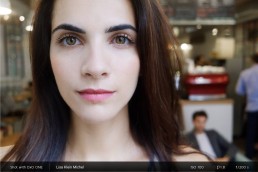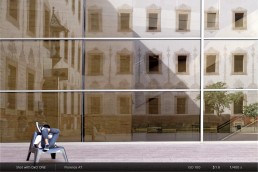Framing and composition basics Composition
To capture a beautiful and well-balanced photo, position your main subjects along the lines and/or focal points of the image as you move from left to right. Experiment with shapes and colors.
To obtain a perfect photo, take the time to carefully plan your composition by correctly placing the various elements in the image.
In photography, as is the case with all disciplines involving image composition, it’s generally best to divide your frame along a 3×3 grid. This produces lines along each third of the photo that you can use to place the important elements within the frame. Right after you take a photo, look at it with the composition grid, which you can activate in your DxO ONE’s settings menu and then display by swiping down on the preview screen. This grid also lets you check your photo’s horizontal orientation.
The places where the lines dividing the photo into thirds intersect are called crash points. By placing the important elements in your photo at these points, you will add impact to your composition.
(Photographer Jean-Marc Alexia)
Lines, especially horizontal lines, are part of every composition. In Western culture, these lines direct the eye from the left to right, corresponding to the direction such cultures read print. An image based on these horizontal lines will appear balanced, stable, and strong.
Photography is much more than a horizontal frame, however. You can also rotate your smartphone and the DxO ONE to compose your image using a vertical orientation, which is especially suited for portraits. For landscape or architectural photography, a vertical orientation adds impact to the image and makes your shots more diverse.
Diagonal lines, which are often a part of architectural photography, add depth and movement. Curves also direct the eye within an image, but do so much more gently. Observe and photograph rounded shapes in your environment, such as a spiral staircase, a winding road, or the top of a tree.
To determine the correct angle for your shot, carefully observe the area and your subject before getting closer. You can use high-angle and low-angle shots to alter the subject’s proportions. For example, if you’re photographing a building while standing at its base and looking up, the bottom will appear wider than the top. The skewed perspective emphasizes the subject’s height.
Color also plays a role in composition and can strongly affect an image. Blue conveys a feeling of calm and simplicity. If you like powerful and expressive images, opt to emphasize any red or yellow elements in the scene.







 Download page
Download page